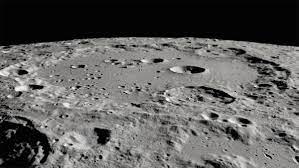
In a significant milestone for space exploration, a Houston-based company has successfully landed America’s first spacecraft on the Moon in more than half a century. The mission, undertaken by Intuitive Machines, forms part of NASA’s initiative to deploy uncrewed commercial robots, funded by the agency, to prepare for forthcoming astronaut missions.
The spacecraft, named Odysseus, launched on February 15 atop a SpaceX Falcon 9 rocket, featuring a groundbreaking supercooled liquid oxygen and liquid methane propulsion system. Racing through space with unprecedented speed, Odysseus approached its destination near the lunar south pole.
However, despite confirming receipt of a faint signal from the spacecraft, there remains uncertainty regarding its full functionality. Initial reports suggest that the lander may have touched down off-kilter, leaving questions about its operational status.
Odysseus, resembling a hexagon-shaped vessel, executed its descent and landed near the lunar south pole at 2323 GMT, decelerating from an astonishing speed of 4,000 miles per hour. The landing site, Malapert A, is strategically positioned within an impact crater, approximately 300 kilometers from the lunar south pole.
NASA officials underscored the significance of the mission, highlighting its role in exploring environmental conditions at the lunar south pole—a critical area for future astronaut missions. Key objectives include assessing surface characteristics, temperature variations, and radiation levels to inform future exploration endeavors.
Equipped with state-of-the-art instruments, Odysseus carries cameras to monitor surface changes induced by spacecraft engine plumes and devices to analyze charged dust particles suspended over the lunar surface. Notably, the spacecraft relies on a NASA landing system to precisely gauge velocity and distance during descent, ensuring a safe touchdown.
Intuitive Machines’ endeavor also includes cargo from private clients, notably featuring 125 stainless steel mini Moons by renowned artist Jeff Koons. Additionally, an archive created by a nonprofit organization aims to preserve human knowledge across the solar system.
NASA’s partnership with Intuitive Machines underscores its commitment to fostering commercial lunar exploration. Through initiatives like the Commercial Lunar Payload Services (CLPS), the agency aims to leverage private sector expertise to advance lunar exploration and establish a sustainable lunar presence.
The successful landing of Odysseus marks a pivotal moment in space exploration, demonstrating the capabilities of commercial entities in lunar missions. With aspirations to establish a long-term presence on the Moon and unlock its resources, the mission heralds a new era of lunar exploration, expanding the boundaries of human endeavor in space.
Sources By Agencies


